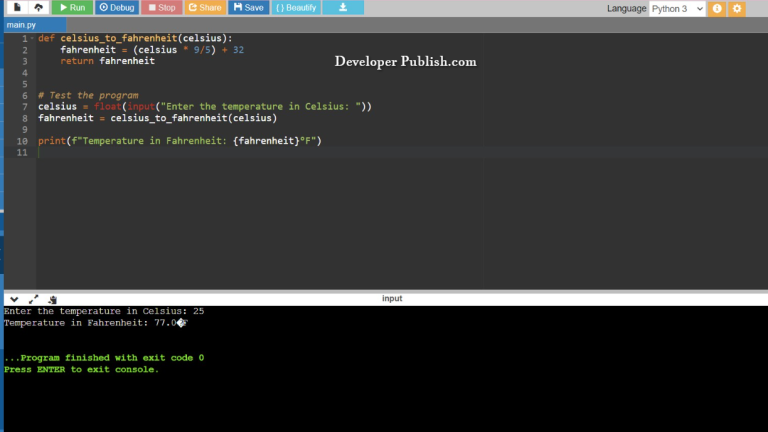In this python tutorial, you will learn how to Check if a Character is an Alphabet or not using the if and else statements along with the equality operators of the python programming language.
How to Check if a Character is an Alphabet or not?
Let’s take a look at the source code , here the values are given as input by the user in the code, the <= lesser than equal to operator and the >= greater than equal to operator along with the if and else statements carry out the function.
RUN CODE SNIPPET#Python program to Check if a Character is an Alphabet or not
ch = input("Enter a character: ")
if((ch>='a' and ch<= 'z') or (ch>='A' and ch<='Z')):
print("\n{0} is an Alphabet".format(ch))
else:
print("\n{0} is not an Alphabet".format(ch))
INPUT:
Buddy
OUTPUT:
Enter a character: Buddy is an Alphabet
- Here we give the user the option to enter the values and the input values are scanned using the
inputfunction and are stored in the variablechwith the statements/strings("Enter a character:" ). - In the STDIN section of the code editor the input values are entered.
- We declare the
ifstatement with the conditions as(ch>='a' and ch<= 'z') or (ch>='A' and ch<='Z')followed by a colon:If the conditions are met, theprintfunction will display the statement("\n{0} is an Alphabet".format(ch)). - If the above condition is not met the
elsefunction will be executed and theprintfunction will display the statement("\n{0} is not an Alphabet".format(ch)). - In the above lines of code, the variables
{0}will hold the value ofchwhere theformatfunction helps in variable substitution and data formatting.
NOTE:
- The >= greater than and equal to operator along with the <= greater than and equal to operator is a comparison operator which returns True if the condition is satisfied, if not it returns false.
- The input() function allows a user to insert a value into a program, it returns a string value.
- The if and else statements evaluates whether an expression is true or false. If a condition is true, the “if” statement is executed otherwise, the “else” statement is executed.
- The colon : at the end of the if, elif and else statement tells Python that the next line of code should only be run if the condition is true.
- The statement for the input function are enclosed in single quotes and parenthesis.
- The \n in the code indicates a new line or the end of a statement line or a string.
- The print statement/string to be displayed in enclosed in double quotes.


